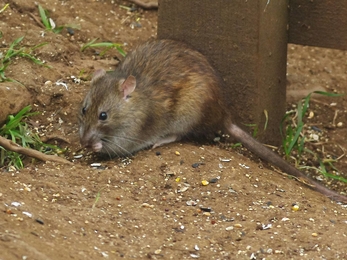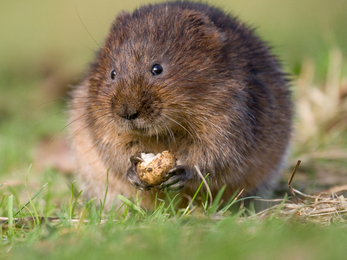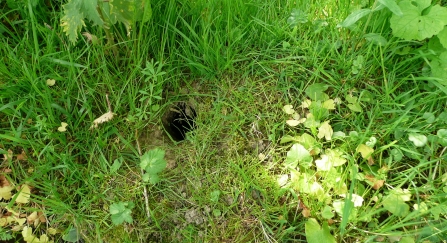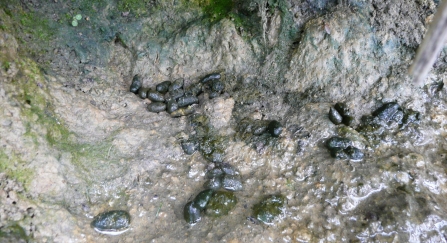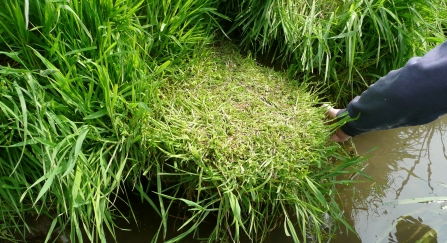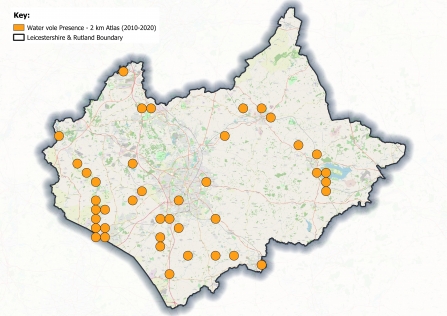Now is an excellent time of the year to wander down to your nearest waterway in the hope of spotting Water voles, one of our most iconic mammal species. In this blog we take a look at what you need to look out for and the best ways to maximise your changes of seeing Water voles in Leicestershire and Rutland.
How do they look?
Water voles are our largest vole species and are often misidentified as rats when seen or heard “plopping” into the water to escape approaching walkers. You can tell them apart quite easily as water voles have shorter tails that are furry as opposed to scaly and ears that are buried in fur as opposed to being prominent and hairless. Water voles also have characteristically blunt cubby noses instead of the more pointed noses found in rats. The two can both be seen in and around our waterways, but have very different tell-tale field signs and dietary habits, all of which are helpful to keep in mind when heading out water vole spotting.


